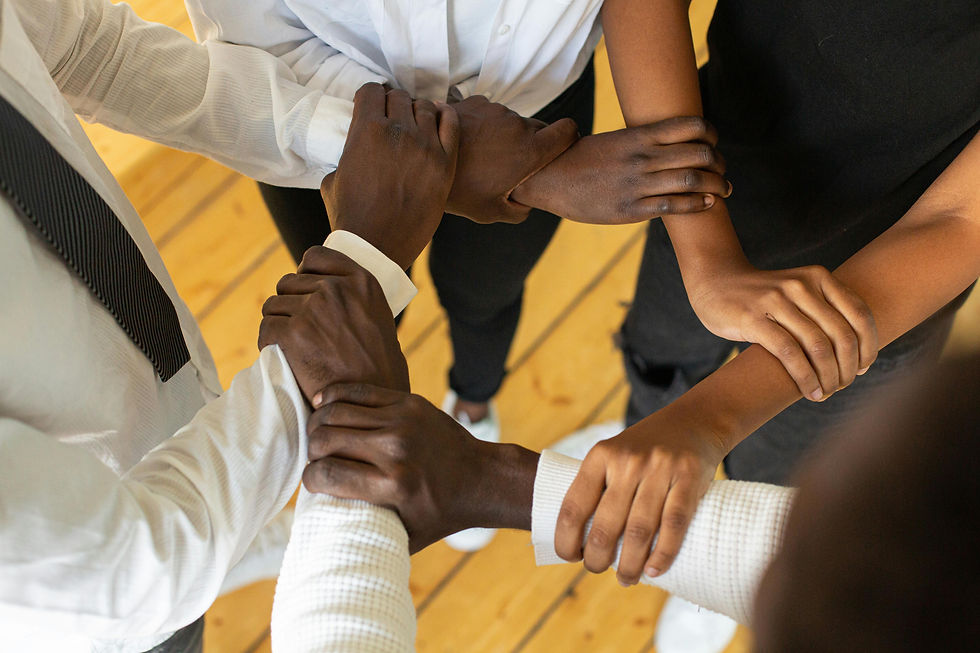On Resistance and Struggle: Women in the Cuban Hip-Hop Scene
- Margaree Jackson
- Jul 3, 2019
- 4 min read
Updated: Oct 10, 2023
1990s hip-hop greats Salt-N-Pepa, TLC and Missy Elliot traveled across the Atlantic Ocean to Cuba not by airplane or boat but through radio waves. The signal may have been weak, but the message and influence were strong. Afro-Cubans in Alamar gathered to listen to the few hip-hop stations that they could pick up from America using makeshift antennas. Although hip-hop was created in the U.S., the young Cubans felt a deep, ancestral connection to the beats and cadence of the music. They fused American hip-hop flavor with a bowl of ajiaco criollo (Cuban creole stew) to create their own Cuban hip-hop flavor. It was then that Cuban hip-hop was born.
Hip-hop has long represented resistance and struggle. The rhythm of hip-hop is undeniable, and the purpose is one of politics, power, and freedom. Cuban hip-hop artists used the genre to discuss issues affecting Afro-Cubans such as racial discrimination, the prevalence of racial profiling and the struggles of living in poverty. These problems became more visible after the fall of the Soviet Union and the collapse of the Cuban economy. This period of economic hardship became known as the Special Period. During this time, artists formed the Cuban Hip-Hop Movement (1990s-early 2000s), an artistic movement in which artists used rhythm and rhymes to express their struggles and concerns of racial discrimination and inequality. The movement rapidly swept the nation and grew in popularity. Rappers spit flows in houses and at concert venues, not only sharing their rhymes but also engaging in open dialogue with concert attendees to hear their experiences.

Female artists played a critical role in the movement and the hip-hop scene in Cuba. Janet Díaz, known by her stage name La Faraona, formed the first female hip-hop group Instinto in 1996. Since then, many female hip-hop artists have taken the mic to speak on feminism and being unapologetically Black. Women often have to work harder, as many view hip-hop as a genre that is for and dominated by men. However, female Cuban hip-hop artists have not been deterred from speaking out on what they believe in. They have and continue to work hard in an industry dominated by men. Magia Lopez, a member of the group Obsesión, served as the director of the Cuban Rap Agency, a government agency that sponsors the production and distribution of rap music. Female artist La Fina used her position as an artist to start an extensive hip-hop initiative known as Somos Mucho Más (We Are Much More) that focuses on feminism and anti-racist narratives.
I had the chance to speak with the La Faraona, the first ever Cuban female hip-hop artist about her experience as an artist.
Margaree Jackson: Can you tell me a little about yourself and how you became involved with hip-hop?
La Faraona: My name is Janet. I am from Havana, Cuba. Hip-hop arrived in Cuba in the 90s. I began listening to TLC, Salt-N-Pepa, Queen Latifah, and Missy Elliot on the radio. When I heard these women rapping, I said, “I want to do this. I can do this,” and I made my dream my reality. I started the first female hip-hop group in Cuba called Instinto.
MJ: What is it like being a woman and person of African descent in the industry? What are some of the challenges that you face as an Afro-Cuban, female hip-hop artist? What are some of the triumphs?
LF: In my opinion, being a woman of African descent in the industry is not a problem. In the industry, what matters is your quality as an artist. This helps you to succeed because there are many good artists. There are not many women in the industry. Being a woman in a male-dominated industry means that you must have twice as much strength because some men think that they are insuperable.
MJ: Were you involved in the Cuban Hip-Hop Movement? If so, can you tell me about your involvement?
LF: Yes. Well, in 1996, when I began, it was a little difficult. But with much work and sacrifice, my female group was widely accepted. Many people doubted us initially because they did not know much about hip-hop or rap. During the movement, we saw a lot of donations from the United States. They sent us music on vinyl discs because we did not have the resources to make beats. For me, these were special and unforgettable times.
MJ: What are some of the messages that you aim to convey in your songs?
LF: When I began, there were no feminine groups. There were only men. After seeing this, I said that I could do the same that the men were doing, but from my perspective as a woman. So, the first songs that Instinto made talked about machismo, how men treated women, and how we, as women, want to be treated. Now, as a solo artist, I am interested in singing about Afro-Cuban roots, slavery of Africans in Cuba and Afro-Cuban religion.
MJ: What message do you have for Black girls and young women who hope to make it in the music industry?
LF: To be sure of themselves. To follow their dreams. To have their own opinion and to make music from their heart and with their heart. They should always express their true feelings and not try to copy what others are doing. There are many costs in the industry, but in the end their own strength will bring them the reward of others applauding and accepting their music.
Today, Cuban hip-hop has journeyed across the Atlantic, becoming a beacon of the African diaspora and common experiences of people of African descent across the globe.










Comments